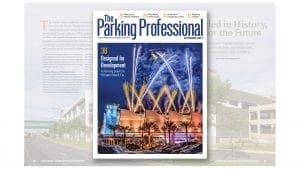
Grounded in History, Positioned for the Future (The Parking Professional October 2017)
Duluth’s new transportation center respects history and embraces transportation and mobility.
Learn from award-winning professionals — explore our whitepapers, blogs, and the latest industry updates.
Join our dynamic organization of engineers, land surveyors, landscape architects, environmental scientists, and architects!
Talk to a market leader today! We’ll answer any questions you have about our professional services.
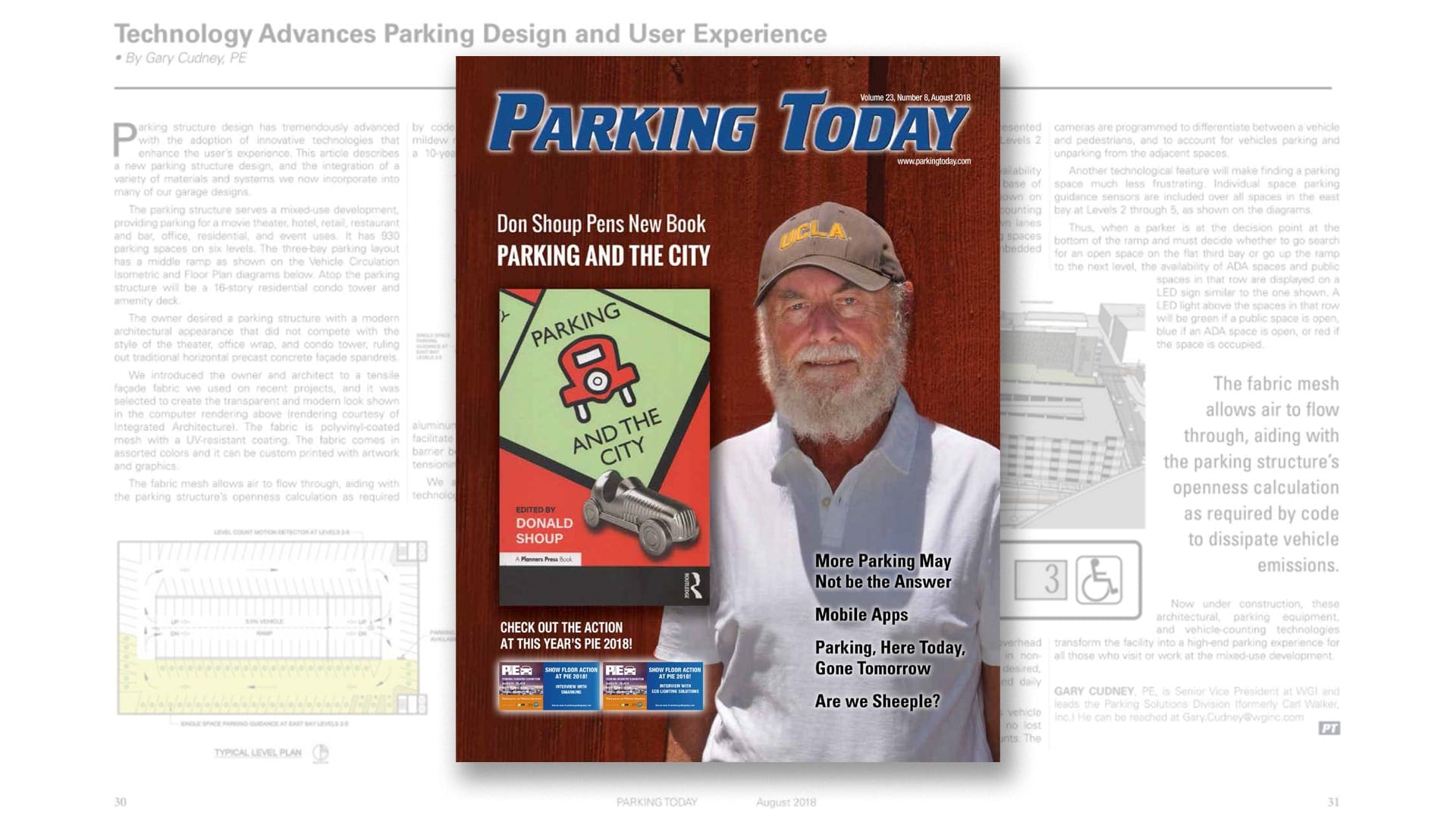
This article appeared in the August 2018 issue of Parking Today. Click here to view the article.
By Gary Cudney, PE
Parking structure design has tremendously advanced with the adoption of innovative technologies that enhance the user’s experience. This article describes a new parking structure design, and the integration of a variety of materials and systems we now incorporate into many of our garage designs.
The parking structure serves a mixed-use development, providing parking for a movie theater, hotel, retail, restaurant and bar, office, residential, and event uses. It has 930 parking spaces on six levels. The three-bay parking layout has a middle ramp as shown on the Vehicle Circulation Isometric and Floor Plan diagrams below. Atop the parking structure will be a 16-story residential condo tower and amenity deck.
The owner desired a parking structure with a modern architectural appearance that did not compete with the style of the theater, office wrap, and condo tower, ruling out traditional horizontal precast concrete façade spandrels.
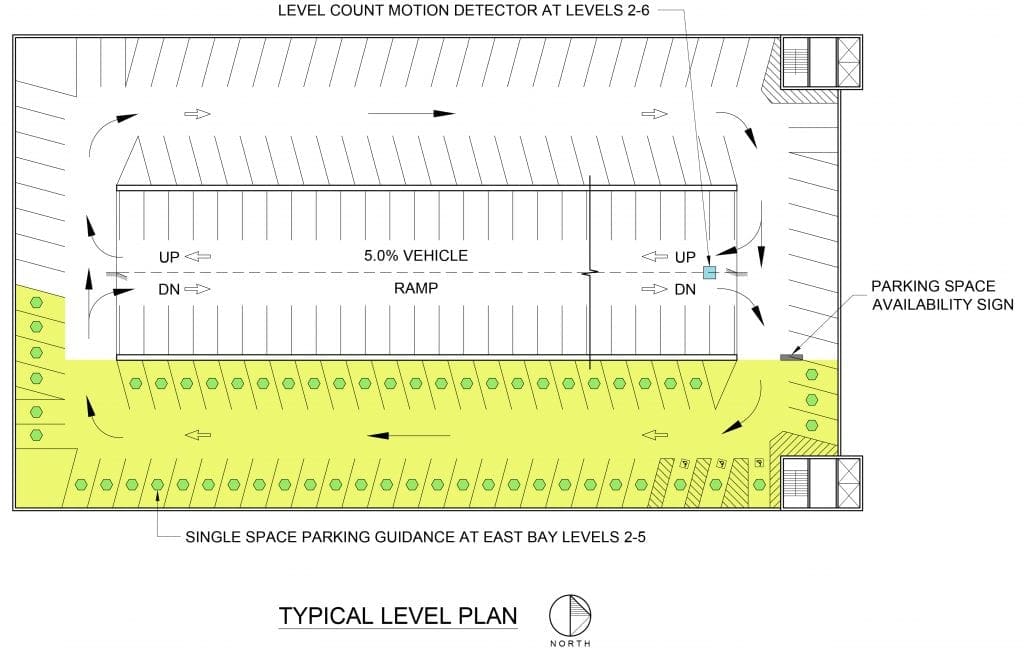
We introduced the owner and architect to a tensile façade fabric we used on recent projects, and it was selected to create the transparent and modern look shown in the computer rendering above (rendering courtesy of Integrated Architecture). The fabric is polyvinyl-coated mesh with a UV-resistant coating. The fabric comes in assorted colors and it can be custom printed with artwork and graphics.
The fabric mesh allows air to flow through, aiding with the parking structure’s openness calculation as required by code to dissipate vehicle emissions. The fabric is mildew resistant with a 20-year anticipated life span and a 10-year warranty. The fabric is attached to extruded aluminum frames that mount to the concrete structure and facilitate fabric tensioning during installation. The vehicle barrier behind the tensile façade will be galvanized post-tensioning cable.
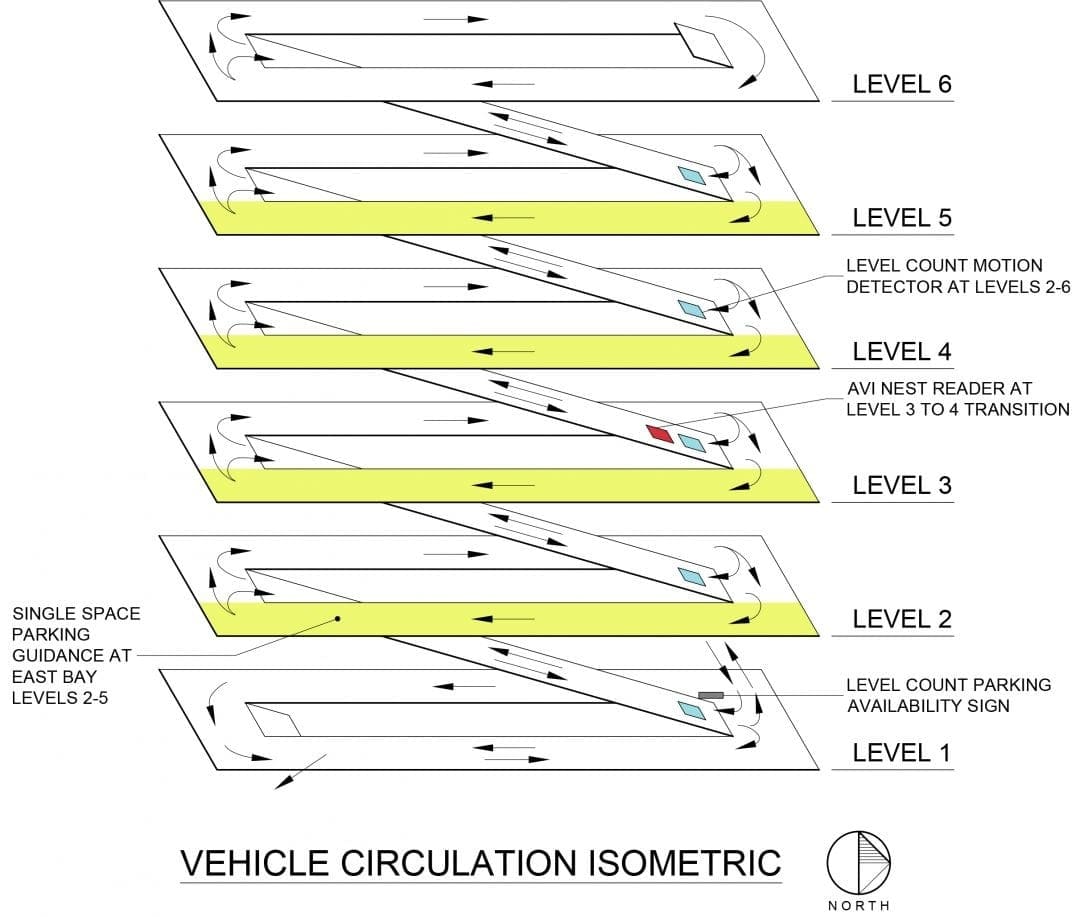
We are utilizing state-of-the-art parking equipment technology and the facility will be one of the first in the city to only use pay-on-foot stations. Automatic vehicle identification (AVI) will be used for hotel valet parking at Level 1 and for contract parking.
Contract parkers will be directed to park during the day at Levels 4 to 6, reserving Levels 2 and 3 for short-term parking. An ungated nest created at the transition between Levels 3 and 4 with an AVI reader will confirm that contract parkers entering at Level 1 actually park above Level 3 as required. Theater guests will conveniently self-validate their parking ticket inside the theater.
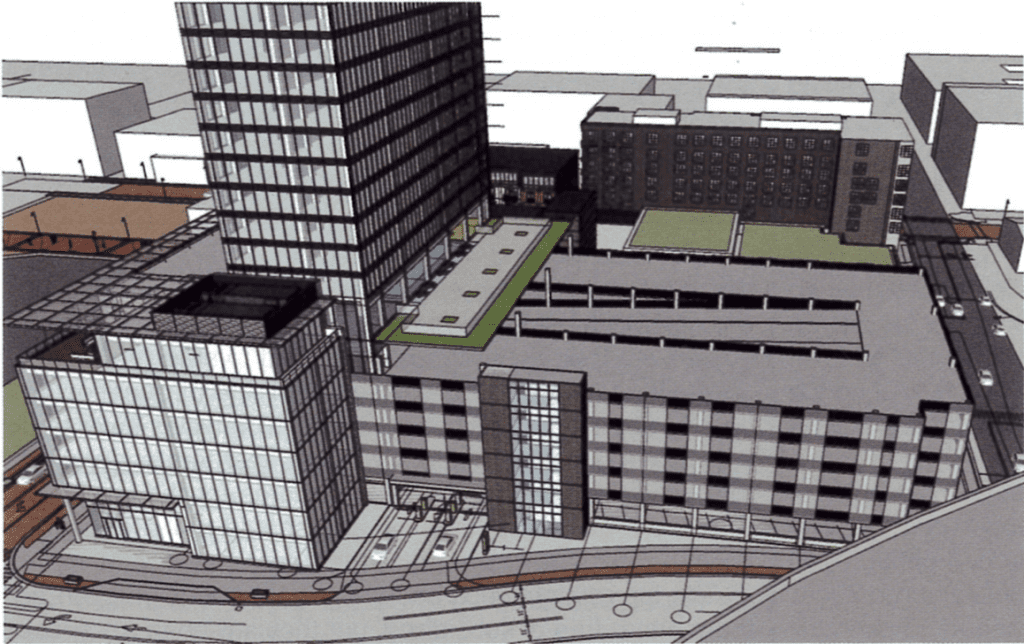
The design also focuses on using technology to create a simple and convenient parking experience. Upon entering the parking structure at Level 1 (reserved for hotel valet parking), users are presented with the parking spaces availability, by level, for Levels 2 through 6.
The parking counts shown on the LED space availability sign are determined by motion sensors at the base of the ramps leading to Levels 2 through 6 as shown on the Isometric and Floor Plan diagrams. Old level-counting technology would require delineating up and down lanes on the ramp, result in the loss of 20 to 30 parking spaces and would provide inaccurate counting by embedded detector loops.

Newer vehicle-counting technology using overhead ultrasonic sensors that detect vehicle direction in non-delineated lanes may also be less accurate than desired, necessitating physical counts of open spaces and daily count system resetting.
Now, video camera analytic technology senses vehicle motion in non-delineated bi-directional lanes (so no lost spaces on the ramps), providing more accurate counts. The cameras are programmed to differentiate between a vehicle and pedestrians, and to account for vehicles parking and unparking from the adjacent spaces.
Another technological feature will make finding a parking space much less frustrating. Individual space parking guidance sensors are included over all spaces in the east bay at Levels 2 through 5, as shown on the diagrams.
Thus, when a parker is at the decision point at the bottom of the ramp and must decide whether to go search for an open space on the flat third bay or go up the ramp to the next level, the availability of ADA spaces and public spaces in that row are displayed on a LED sign similar to the one shown. A LED light above the spaces in that row will be green if a public space is open, blue if an ADA space is open, or red if the space is occupied.
The fabric mesh allows air to flow through, aiding with the parking structure’s openness calculation as required by code to dissipate vehicle emissions.
Now under construction, these architectural, parking equipment, and vehicle-counting technologies transform the facility into a high-end parking experience for all those who visit or work at the mixed-use development.

WGI is a national design and professional services firm leading in technology-based solutions for the construction of public infrastructure and real estate development. At WGI, we’re providing Tomorrow’s Infrastructure Solutions Today.

Duluth’s new transportation center respects history and embraces transportation and mobility.

As retail morphs into “e-tail”, parking designs must be adaptable. Discover how a simple rework and reflow of current parking options can aid retailers in meeting new customer demands.
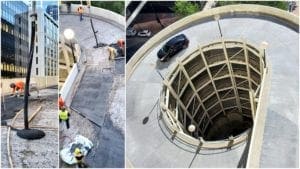
Selecting a qualified and experienced restoration consultant is vital to a project’s overall success. This expert case study details the steps to develop an effective rehabilitation program.
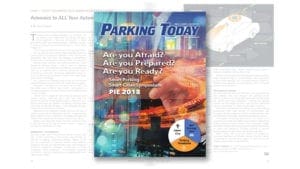
Part 1: Many Barriers, But Some Benefits to Come

On too many highways, both state and federal, there aren’t enough rest areas to serve the needs of high volume truck traffic mandated to take a break. WGI’s team is ready to change that.
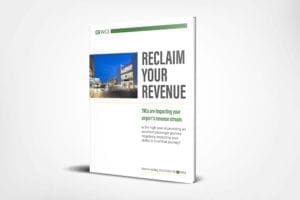
Is the high cost of providing an excellent passenger journey negatively impacting your ability to fund that journey?
You’ve been searching for a place like WGI. We look forward to meeting you soon.
Sign up to receive emails to hear our latest news and achievements in our monthly newsletter.
Enter your zip code, and we’ll personalize your experience with local projects, office locations, team members, and more.
WGI supports its associates with meaningful opportunities for growth, strong benefits and perks, while we work collaboratively with clients and co-consultants to shape and improve communities.






WGI is a dynamic organization with opportunities nationwide for engineers, land surveyors, landscape architects, environmental scientists, and architects.